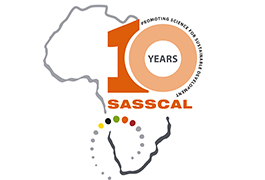
Storm clouds Source: Paulina Zigelski
Energy is vital to development in Southern Africa. Beyond its use in daily life, energy catalyses infrastructure projects that drive both regional integration and economic growth. As the Southern African Development Community (SADC) region industrialises on its path to sustained development, energy production and distribution will only increase in importance. The regional energy generation mix is still largely dominated by non-renewable energy, particularly coal. Coal supplies 75% of power generation in Southern Africa (SADC Energy Monitor 2018) and continues to be the primary choice that many countries generally rely on. However, these energy sources generate harmful greenhouse gases that accelerate climate change and its devastating impacts. As we go into the future, we experience more and more hotter years. 2018 was the fourth warmest since 1880 and ranks behind 2016, 2017 and 2015. The past five years are, collectively, the warmest years in the modern record (NASA and the National Oceanic and Atmospheric Administration (NOAA) 2019). The relentless accumulation of greenhouse gases in the atmosphere, plus natural climate variability, helped to push 2019 toward record warmth (NASA 2019).
Despite the dependency on fossil fuels by several SADC countries, the region has over the years experienced lowest rates of access to electricity (SADC and SARDC, 2018), along with other regions in Africa. Intermittent power shortages have been experienced across the region for the past decade. In South Africa, the first period of chronic power shortages started in late 2007 (Myburgh 2008). South Africa experienced its worst energy crisis when load shedding stage 6 was activated for the first time in December 2019. The Lusaka Times (30/10/2019) reported a 15hour load shedding in Zambia and all SASSCAL countries and other countries within the SADC region are experiencing various levels of load shedding.
The SADC region is also generously endowed with renewable energy resources such as solar, wind, and hydro. As concerns about sustainable energy and the impact of fossil fuels rise, renewable energy has become an important topic, both within the SADC region and around the world. A few decades ago, hydrogen was identified as a critical and indispensable element of a decarbonised, sustainable energy system to provide secure, cost-effective, and non-polluting energy. Since then, there has been a continued and strengthened global resolve to adopt renewable energy to mitigate climate change.
Transitioning from fossil fuels to renewable energy represents a co-benefit in terms of reduction of greenhouse gases and reducing pollution from fossil fuels that continues to cause harm to many in the developing world. Different types of renewable energy exist including hydrogen. Currently, almost all of the available hydrogen is produced from hydrocarbons such as natural gas and coal. As a consequence, the hydrogen production is responsible for the emission of around 830 million tons of carbon dioxide per year (AleaSoft energy forecasting, REVE 2019). However, there is a non polluting alternative, green hydrogen. Green hydrogen is believed to be a non‑polluting alternative because it is obtained through the electrolysis of water with no resultant greenhouse emissions. In this case, hydrogen is a clean fuel that may well have an important role in future low-carbon energy systems. With the decrease in the costs of renewable electricity, in particular solar photovoltaic and wind energy, the interest in green hydrogen is growing.
As such, Green Hydrogen Energy (GHE) has the potential to slow climate change and create a sustainable future. Hydrogen could play a significant role in a low-carbon future enabling a more secure energy system with reduced fossil fuel dependence (International Energy Agency 2019). GHE has the versatility to operate across various sectors including transport, industry and electricity generation. Adoption of GHE is however not without drawbacks. The current major drawbacks to hydrogen are cost and availability and inadequate scientific knowledge and expertise in the developing world to embrace the new technology.
In response to the above, the German Ministry of Education and Research is investing a substantial amount of money to spearhead knowledge generation and capacity building towards the commercial production of green hydrogen in Africa. This massive Initiative is funded by the Renewable Energy and Green Hydrogen Technology Department of the BMBF. The project aims to support sustainable and economic development in Africa through a viable hydrogen economy. It has a high potential to make Africa an exporter of green hydrogen hence gaining more relevance in the international energy market and reducing dependence on fossil fuel. It will be coordinated by the Southern African Science Service Centre for Climate Change and Adaptive Land Management (SASSCAL) in SADC. The West African part of the project will be coordinated by the West African Science Service Centre for Climate Change and Adaptive Land Management (WASCAL).
This project is aligned to SASSCAL future direction and in particular the SASSCAL 2.0 Strategy in which the Research Call, SASSCAL emphasizes the importance of transdisciplinary and regionality of SASSCAL’s projects. Under the SADC Grand Challenges, SASSCAL has emphasized the need to give a special focus on projects that cut across different sectors such as Water, food, and energy. The Green Hydrogen Project is a practical example that complements this important research. The Green Hydrogen Project is also an excellent contribution to the global reduction of greenhouse gas emissions. Deforestation rates in several SASSCAL’s Member States are increasing at an alarming rate. Many of the rural communities use wood as the main source of fossil fuel because there is no alternate source of energy or even if there is, they cannot afford. The Green Hydrogen Project has identified this gap and provides a future energy source that not only bridges this gap, but also improves capacity and creates jobs. SASSCAL is fortunate to contribute to this new, emission free and innovative energy future.




